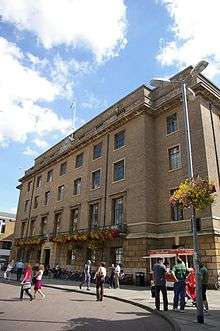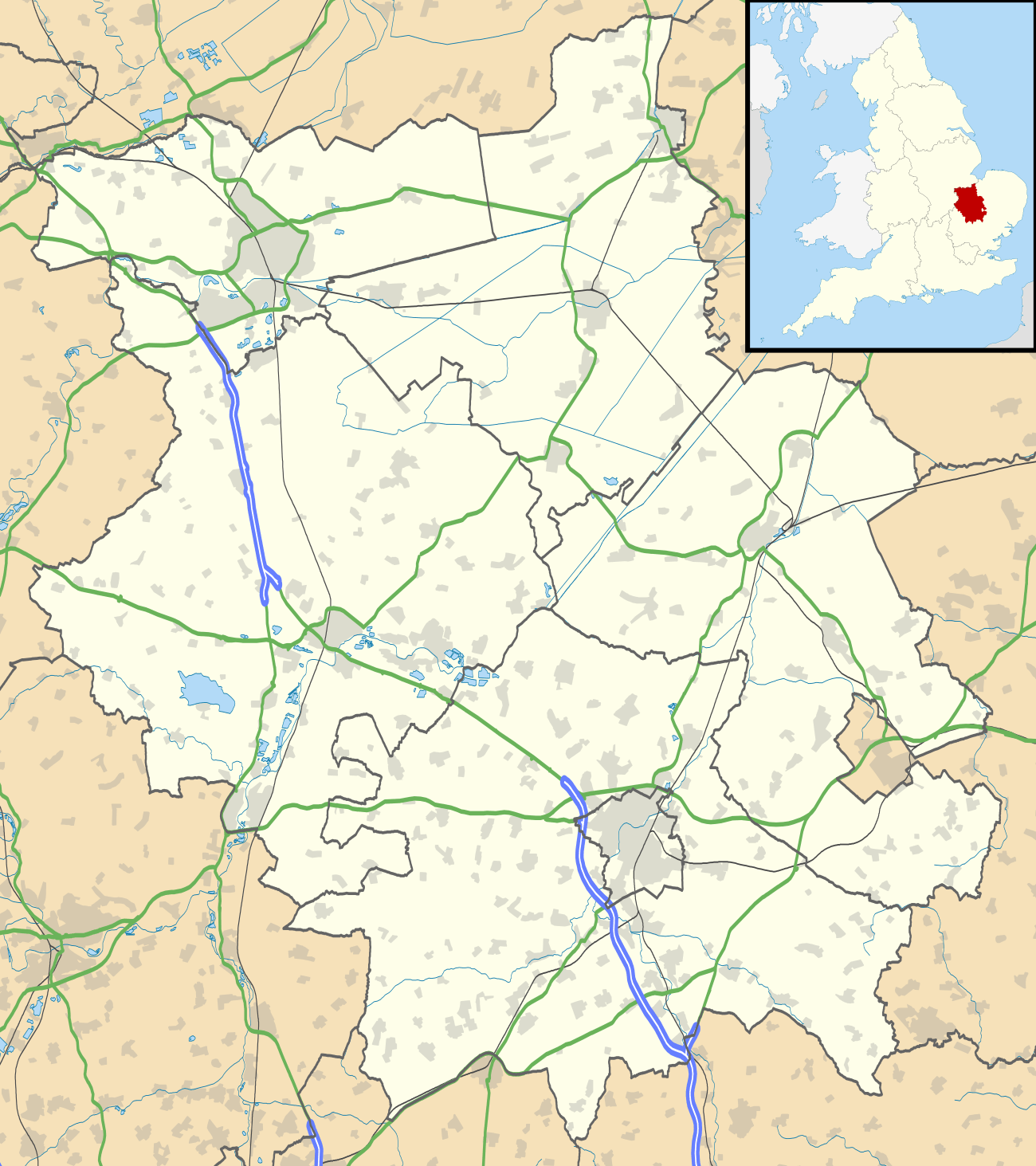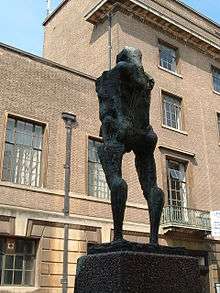Cambridge Guildhall
Cambridge Guildhall is a civic building in the centre of the historic city of Cambridge, England.[1] It includes two halls, The Large Hall and The Small Hall, and is used for many disparate events such as comedy acts, conferences, craft fairs, live music, talks, and weddings. It is also used by the University of Cambridge for certain examinations. It is owned and managed by the Cambridge City Council, and it is their seat of government. The Guildhall is located on the south side of Market Hill, the market square in Cambridge, between Peas Hill to the west and Guildhall Street to the east. It is a Grade II listed building.[2]
| Cambridge Guildhall | |
|---|---|
 | |
| Location | Cambridge, Cambridgeshire |
| Coordinates | 52.2049°N 0.1192°E |
| Built | 1939 |
| Architect | Charles Cowles-Voysey |
Listed Building – Grade II | |
| Designated | 2 August 1996 |
| Reference no. | 1268372 |
 Location of Cambridge Guildhall in Cambridgeshire | |

History
The earliest known property on the site was a house owned by a wealthy Jew called Benjamin. The building was granted to the town by King Henry III in the 1220s. Part of it was used as a prison. An adjoining synagogue was leased to the Franciscans who later moved to a convent on a site where Sidney Sussex College now stands. The premises became the Cambridge Town Hall or "Tolbooth" as it was known then since its main function concerned tolls for entry to the town and trading at the market. In 1747, a Shire Hall was built on the open area at the front of the Market Square, on arches with stalls beneath.[3] The Shire Hall and the Tollbooth were connected by a wooden bridge over Butter Row, a market street with stalls selling dairy products.[4]
In 1842, after the Law Courts were built on Castle Hill, the Shire Hall and a new Town Hall, were combined into a single building on Market Hill.[3] The present Guildhall, which was designed by Charles Cowles-Voysey, was built on the site of the two original buildings and completed in 1939.[5]
See also
- Cambridge Corn Exchange in Wheeler Street
- Guild
- Guildhall Museum
References
- "Guildhall". Cambridge City Council, UK. Archived from the original on June 13, 2011. Retrieved May 25, 2011.
- Historic England, "Guildhall (1268372)", National Heritage List for England, retrieved 4 January 2018
- Roach, J P C (1959). "'The city of Cambridge: Public buildings', in A History of the County of Cambridge and the Isle of Ely: Volume 3, the City and University of Cambridge". London: British History Online. pp. 116–122. Retrieved 26 August 2019.
- Keynes, Florence Ada (1947). By-ways of Cambridge History. Cambridge University Press. p. 16.
- Roach, J P C, ed. (1959). A History of the County of Cambridge and the Isle of Ely: Volume 3, the City and University of Cambridge. London: British History Online. Retrieved 21 January 2010.